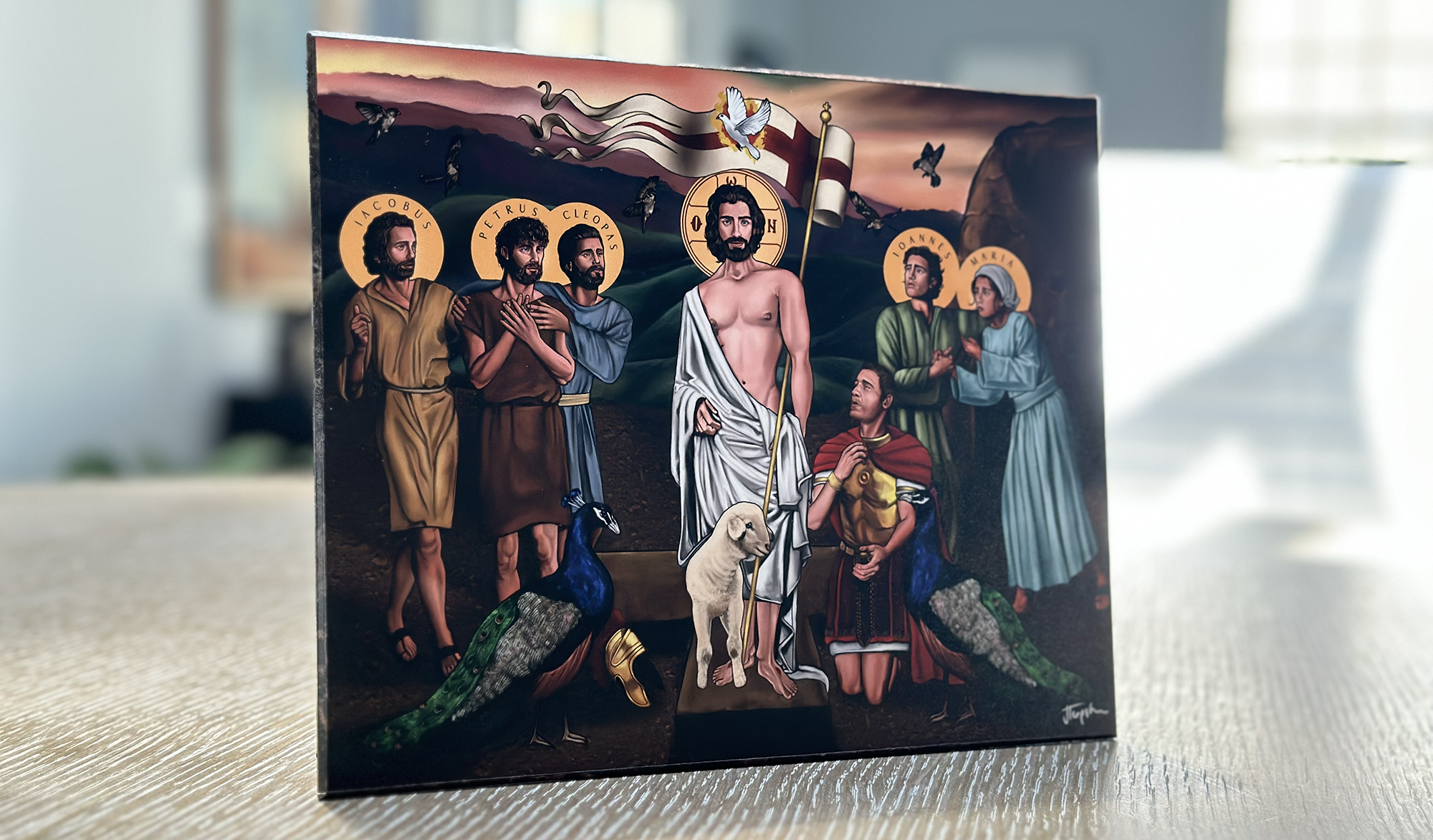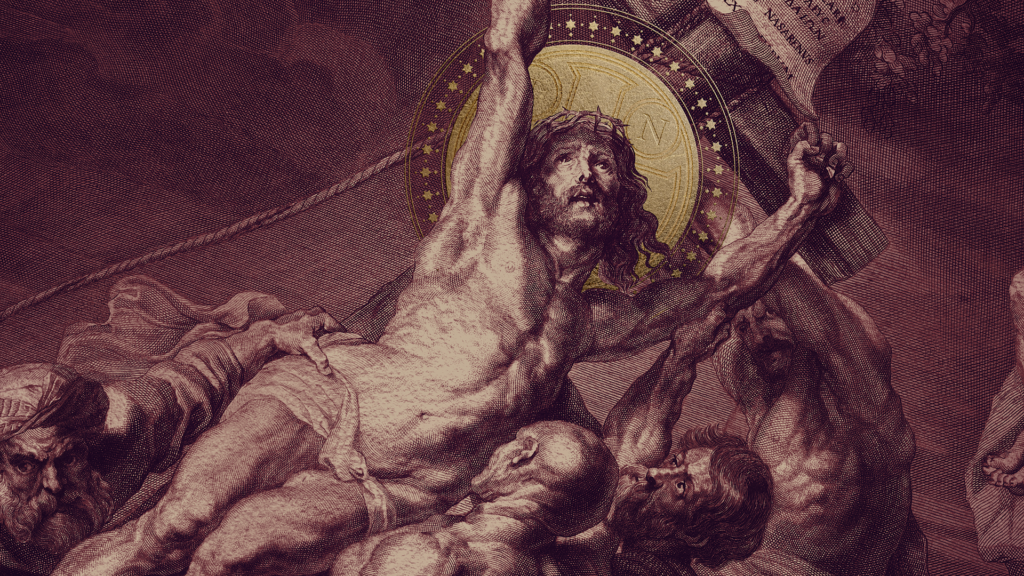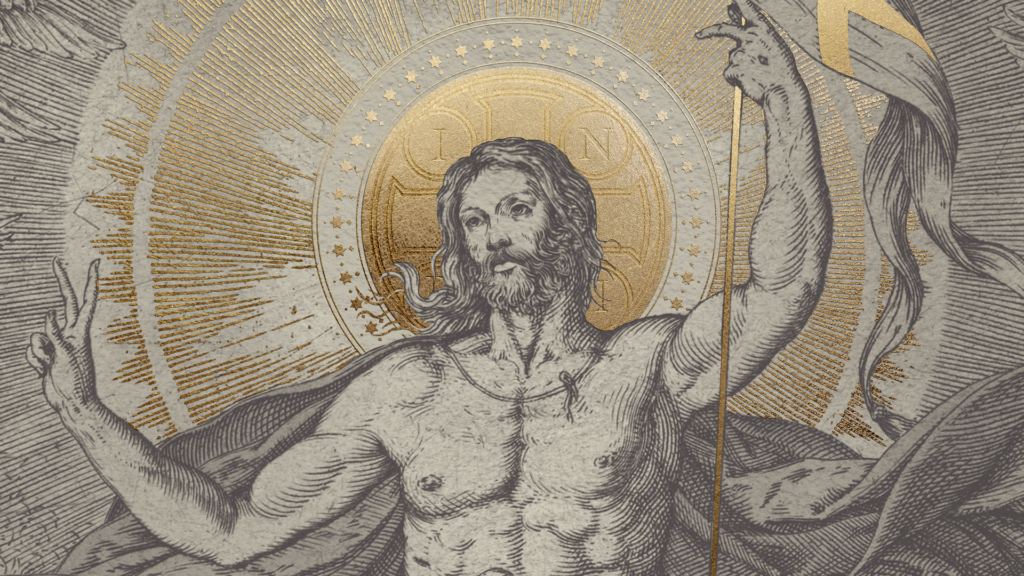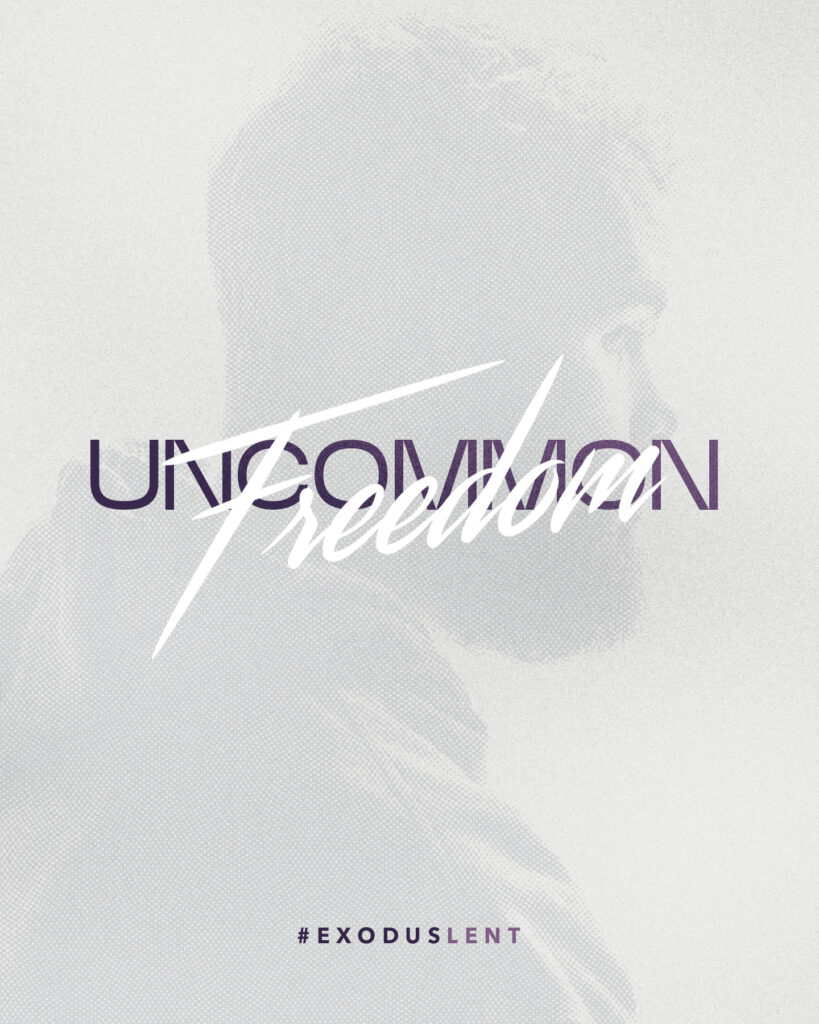Christ is Risen! This piece is a reflection on the crowning moment of Jesus’ life and ministry, prior to his Ascension, Jesus is resurrected from the dead. It is the dawn of the morning, the beginning of the Church, the Crowning moment of the Sacrificial Lamb. The seal of the tomb is broken. Death is defeated by death. The war has been won!
The piece is a testament to the great victory in salvation history. It is a piece that celebrates who the salvific person of Jesus is, and the momentous occasion of his rising from the dead.
In the piece, we see from left to right: James (Iacobus), Peter (Petrus), Cleopas, Jesus, John (Ioannes), Mary (Maria) and the centurion on a cliff overlooking the hills of Judea. It is the breaking of the morning, the beginning of a new day. To the right we see an abandoned tomb that housed our Lord for only a moment. Below, two peacocks revere the King of Kings, accompanied by a discarded helmet and the Resurrection lamb. Above, the Holy Spirit like fire breaks through the Resurrection banner, announcing the eternal consequences of this scene. Around the banner, the dove of the Spirit is accompanied by 5 sparrows in flight.
Buy this Sacred Art exclusively at the Freedom Store!
The sparrows are a reference to Luke 12:6-7: “Five sparrows are sold for only two pennies, and God does not forget any of them. But God even knows how many hairs you have on your head. Don’t be afraid. You are worth much more than many sparrows.” This is to represent that in the 40 days following Jesus’ resurrection, this is the chorus I imagine he repeated to his apostles over and over again. Do not be afraid! God cares infinitely for those things that God cares for infinitely less than he cares for you.
The 5 sparrows in varying positions and speeds of flight are analogous to the journey of the apostles in Acts, taking on different roles as the bedrock of the early Church. All of the sparrows are ordered towards God, flying towards Jesus, but being in flight with the Holy Spirit.
In line with the Holy Spirit being a proclamation of the presence of God we see at the Baptism of Jesus, we also see the cross within Jesus’ halo adorning O (omicron), Ѡ (omega), N (nu), as a callback to Greek and Bulgarian iconography. It spells O Ѡ N, which means “I AM”. The banner above is commonly used in Orthodox iconography (see Saint Isaac’s Cathedral in Saint Petersburg) as a symbol of victory over Hades and death. The object of his death, his cross, rests prone, once an object of torture, now the platform of his Ascension and the foundation of the Church. The unblemished lamb is also bloodless, so as to depict the innocence of Christ in his sacrifice and the atonement of sins in his victory. Because of Jesus’ sacrifice, we are washed clean.
The peacocks are more commonly seen in early Christian paintings and mosaics. Ancient Greeks held the belief that peacock flesh did not decay following their deaths, and so the peacock was used as a symbol of everlasting life. They also well represent kingship, being companions to King Solomon (1 Kings 10:22). They thus create a proper composition of the Risen Christ in his glory.
Cleopas was chosen for his presence as the named disciple on the Road to Emmaus (Lk. 24:13-35). James, Peter and John were present as his Transfiguration (Lk. 9:28-43). John and Mary find themselves in a similar position to their presence at the foot of the cross only a few days prior, in which Mary was given as our Blessed Mother. Peter and John likewise were some of the first disciples to see the empty tomb. Finally, Peter is slightly in front of the disciples, representing his elevated position within the early Church. All of figures, despite being in the darkness of the breaking dawn, are illumined by the light of God himself, bringing them into a new day out of darkness.
Finally, we see the one figure without a halo in the scene: the Centurion. The representative of the Romans who tortured and killed Jesus on the direction of the Jews, I imagine this centurion is the one who remarks “This man truly was the Son of God!” (Mt. 27:54). It seems reasonable then that he may have had a conversion that day, recognizing Jesus as Lord and placing his identity as centurion at the foot of the Savior.
The mix of elements of Greek iconography and latin within my work is to situate this piece within a particular artistic context. I work digitally, and so the work I create is iconographic, but not icons in themselves. The stylistic choices I make are borne out of a love for iconography and the richness these windows into heaven hold. The latin is to situate myself as a Roman Catholic. The style of the work has been described as contemporary art that falls within a historical composition, which I believe is an apt description. It is a privilege and an honor to do this work.
Joshua Terpstra is a sacred artist at Ars Sacra. This commissioned piece by Joshua is exclusively for sale at the Exodus Freedom Store.





